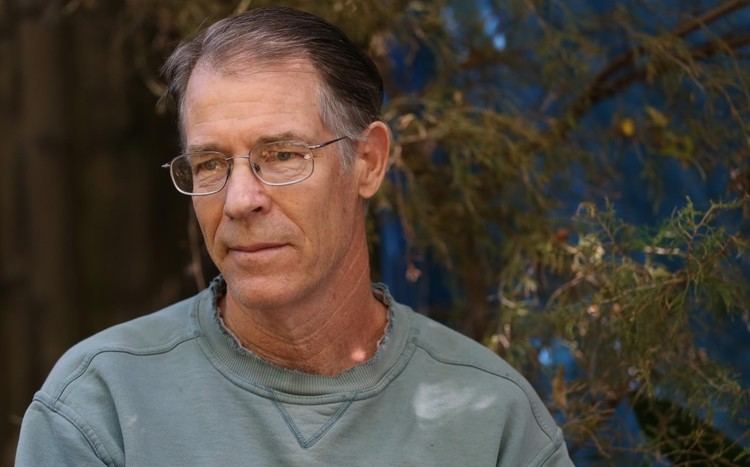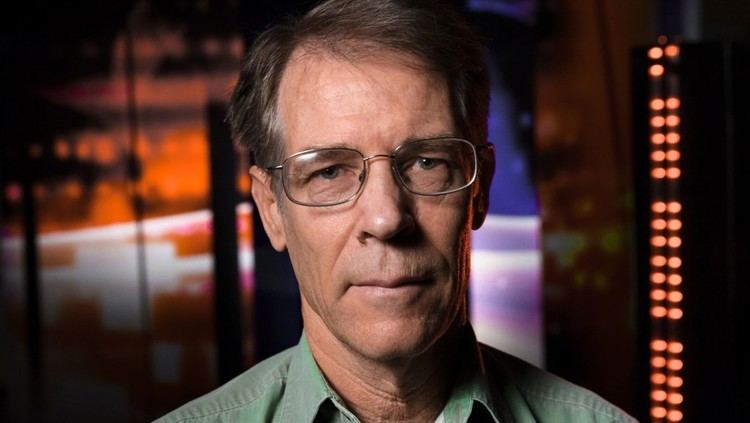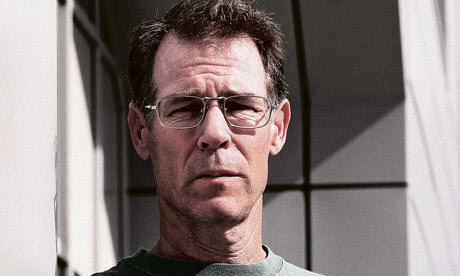Occupation Writer Role Writer Name Kim Robinson | Genre Science fiction Nationality American | |
 | ||
Books Red Mars, 2312, Green Mars, Blue Mars, The Years of Rice and Salt Similar People Ursula K Le Guin, Alastair Reynolds, Joe Haldeman, Larry Niven, Gregory Benford | ||
Kim stanley robinson valuing the earth and future generations imagining post capitalism
Kim Stanley Robinson (born March 23, 1952) is an American writer of science fiction. He has published nineteen novels and numerous short stories but is best known for his Mars trilogy. His work has been translated into 24 languages. Many of his novels and stories have ecological, cultural, and political themes running through them and feature scientists as heroes. Robinson has won numerous awards, including the Hugo Award for Best Novel, the Nebula Award for Best Novel and the World Fantasy Award. Robinson's work has been labeled by The Atlantic as "the gold-standard of realistic, and highly literary, science-fiction writing." According to an article in The New Yorker, Robinson is "generally acknowledged as one of the greatest living science-fiction writers."
Contents
- Kim stanley robinson valuing the earth and future generations imagining post capitalism
- Kim stanley robinson utopia interview part 1 5
- Early life
- Career
- Nature and culture
- Ecological sustainability
- Economic and social justice
- Scientists as heroes
- Climate change and global warming
- Personal life
- References

Kim stanley robinson utopia interview part 1 5
Early life

Robinson was born in Waukegan, Illinois. He moved to Southern California as a child.

In 1974, he earned a B.A. in literature from the University of California, San Diego. In 1975, he earned an M.A. in English from Boston University.
Career

In 1978 Robinson moved to Davis, California to take a break from his graduate studies at UC San Diego. During this time he worked as a bookseller for Orpheus Books. He also taught freshman composition and other courses at University of California, Davis.

In 1982 Robinson earned a Ph.D. in English from the UC San Diego. His initial Ph.D. advisor was literary critic and Marxist scholar, Fredric Jameson, who told Robinson to read works by Philip K. Dick. Jameson described Dick to Robinson as "the greatest living American writer." Robinson's doctoral thesis, The Novels of Philip K. Dick, was published in 1984 and a hardcover version was published by UMI Research Press.

In 2008, Time Magazine named Robinson a "Hero of the Environment" for his optimistic focus on the future.

In 2009, Robinson was an instructor at the Clarion Workshop. In 2010, he was the guest of honor at the 68th World Science Fiction Convention, held in Melbourne, Australia. In April 2011, Robinson presented at the second annual Rethinking Capitalism conference, held at the University of California, Santa Cruz. Among other points made, his talk addressed the cyclical nature of capitalism.
Robinson was appointed Muir Environmental Fellow in 2011 by the John Muir College, University of California San Diego.
Nature and culture
Sheldon Brown described Robinson's novels as ways to explore how nature and culture continuously reformulate one another: The Southern California trilogy as California in the future; Washington DC undergoing the impact of climate change in the Science in the Capitol series; or Mars as a stand-in for Earth in the Mars trilogy to think about re-engineering on a global scale, both social and natural conditions.
Ecological sustainability
Virtually all of Robinson's novels have an ecological component; sustainability is one of his primary themes (a strong contender for the primary theme would be the nature of a plausible utopia.) The Orange County trilogy is about the way in which the technological intersects with the natural, highlighting the importance of keeping the two in balance. In the Mars trilogy, one of the principal divisions among the population of Mars is based on dissenting views on terraforming. Colonists debate whether or not the barren Martian landscape has a similar ecological or spiritual value when compared with a living ecosphere like earth's. Forty Signs of Rain has an entirely ecological thrust, taking global warming for its principal subject.
Economic and social justice
Robinson's work often explores alternatives to modern capitalism. In the Mars trilogy, it is argued that capitalism is an outgrowth of feudalism, which could be replaced in the future by a more democratic economic system. Worker ownership and cooperatives figure prominently in Green Mars and Blue Mars as replacements for traditional corporations. The Orange County trilogy explores similar arrangements; Pacific Edge includes the idea of attacking the legal framework behind corporate domination to promote social egalitarianism. Tim Kreider writes in the New Yorker that Robinson may be our greatest political novelist and describes how Robinson uses the Mars trilogy as a template for a credible utopia.
Robinson's work often portrays characters struggling to preserve and enhance the world around them in an environment characterized by individualism and entrepreneurialism, often facing the political and economic authoritarianism of corporate power acting in this environment. Robinson has been described as anti-capitalist, and his work often portrays a form of frontier capitalism that promotes egalitarian ideals that closely resemble socialist systems, but faced with a capitalism that is maintained by entrenched hegemonic corporations. In particular, his Martian Constitution draws upon social democratic ideals explicitly emphasizing a community-participation element in political and economic life.
Robinson's works often portray the worlds of tomorrow in a manner similar to the mythologized American Western frontier, showing a sentimental affection for the freedom and wildness of the frontier. This aesthetic includes a preoccupation with competing models of political and economic organization.
The environmental, economic, and social themes in Robinson's oeuvre stand in marked contrast to the libertarian science fiction prevalent in much of science fiction (Robert A. Heinlein, Poul Anderson, Larry Niven, and Jerry Pournelle being prominent examples), and his work has been called the most successful attempt to reach a mass audience with a left wing and anti-capitalist utopian vision since Ursula K. Le Guin's 1974 novel, The Dispossessed.
Scientists as heroes
Robinson's work often features scientists as heroes. They are portrayed in a mundane way compared to most work featuring scientists: rather than being adventurers or action heroes, Robinson's scientists become critically important because of research discoveries, networking and collaboration with other scientists, political lobbying, or becoming public figures. Robinson captures the joy of scientists as they work at something they care about. The Mars trilogy and The Years of Rice and Salt rely heavily on the idea that scientists must take responsibility for ensuring public understanding and responsible use of their discoveries. Robinson's scientists often emerge as the best people to direct public policy on important environmental and technological questions, of which politicians are often ignorant.
Climate change and global warming
In 2017, in the novel New York 2140 Robinson explored the themes of climate change and global warming, setting the novel in the year 2140 when the New York City he imagines is beset by a 50-foot sea level rise which half-submerges the city.
Personal life
In 1982, Robinson married Lisa Howland Nowell, an environmental chemist. They have two sons. Robinson has lived in Washington, D.C., California, and during some of the 1980s, in Switzerland. At times, Robinson was a stay-at-home dad. He now lives in Davis, California in a cohousing community.
Robinson has described himself as an avid backpacker with the Sierra Nevada serving as his home range and a big influence on how he sees the world.
